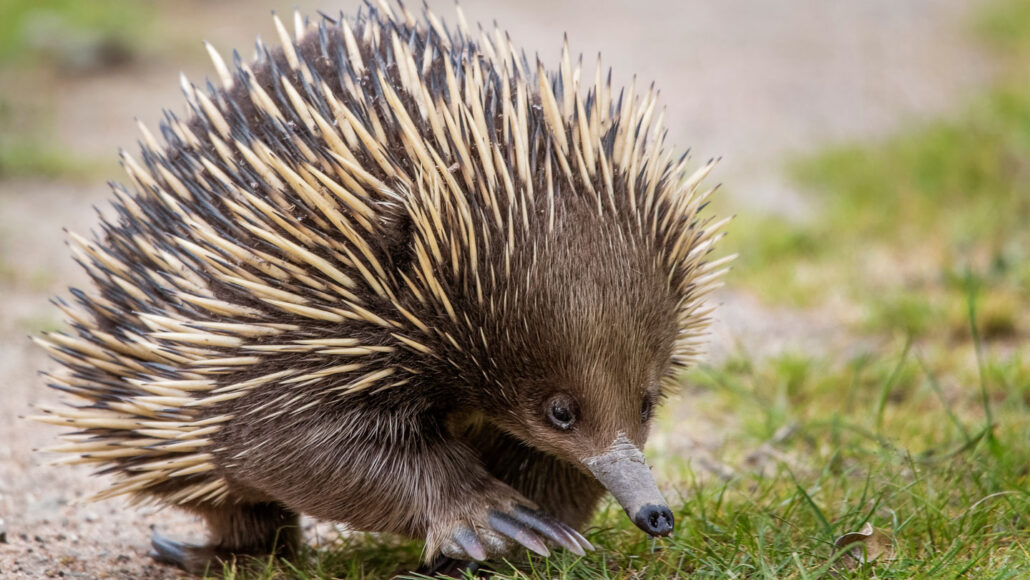behavior: The way something, often a person or other organism, acts towards others, or conducts itself.
biology: The study of living things. The scientists who study them are known as biologists.
birds: Warm-blooded animals with wings that first showed up during the time of the dinosaurs. Birds are jacketed in feathers and produce young from the eggs they deposit in some sort of nest. Most birds fly, but throughout history there have been the occasional species that don’t.
blow: (noun) A term for the materials exhaled by whales through their blowholes. This can include air, mucus, germs and sometimes even seawater.
cavity: (in biology) An open region pocketlike structure surrounded by tissues.
echidna: Also known as the spiny anteater, this is an egg-laying mammal native to Australia, Tasmania and New Guinea. The generally solitary animal has small eyes and a long beak-like nose. It has poor vision but a keen sense of hearing and smell. The short-beaked species have dark fur largely hidden by hollow spines. Spines on long-beaked echidnas are much longer — about 5 centimeters (2 inches) long — and help to give it camouflage.
ecologist: A scientist who works in a branch of biology that deals with the relations of organisms to one another and to their physical surroundings.
environment: The sum of all of the things that exist around some organism or the process and the condition those things create. Environment may refer to the weather and ecosystem in which some animal lives, or, perhaps, the temperature and humidity (or even the placement of things in the vicinity of an item of interest).
evaporate: To turn from liquid into vapor.
evolution: (v. to evolve) A process by which species undergo changes over time, usually through genetic variation and natural selection. These changes usually result in a new type of organism better suited for its environment than the earlier type. The newer type is not necessarily more “advanced,” just better adapted to the particular conditions in which it developed.
habitat: The area or natural environment in which an animal or plant normally lives, such as a desert, coral reef or freshwater lake. A habitat can be home to thousands of different species.
mammal: A warm-blooded animal distinguished by the possession of hair or fur, the secretion of milk by females for feeding their young, and (typically) the bearing of live young.
moisture: Small amounts of water present in the air, as vapor. It can also be present as a liquid, such as water droplets condensed on the inside of a window, or dampness present in clothing or soil.
physiological: Having to do with the branch of biology that deals with the everyday functions of living organisms and how their parts function. Scientists who work in this field are known as physiologists.
rainforest: Dense forest rich in biodiversity found in tropical areas with consistent heavy rainfall.
range: The full extent or distribution of something. For instance, a plant or animal’s range is the area over which it naturally exists.
Tasmania: A major, mountainous island of Australia, south of the eastern part of the mainland across the Bass Strait. Until 1856, Tasmania had been known as Van Diemen's Land. Home to nearly 500,000 people, its capital city is Hobart. The name also refers to a state in Australia that comprises this island and several smaller ones.
trait: A characteristic feature of something. (in genetics) A quality or characteristic that can be inherited.
unique: Something that is unlike anything else; the only one of its kind.








